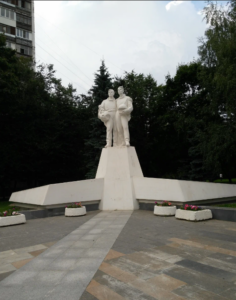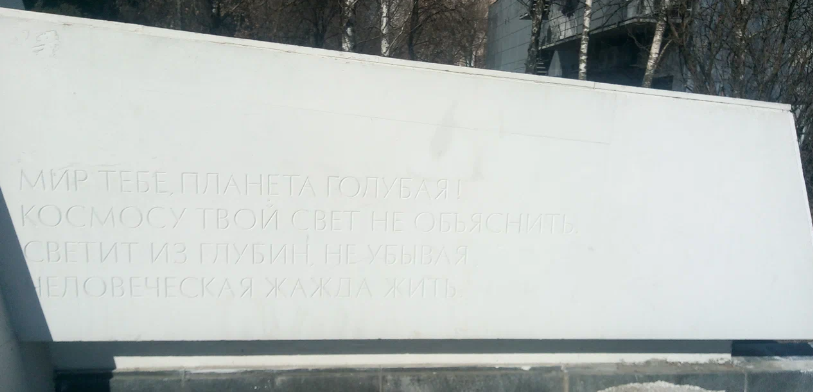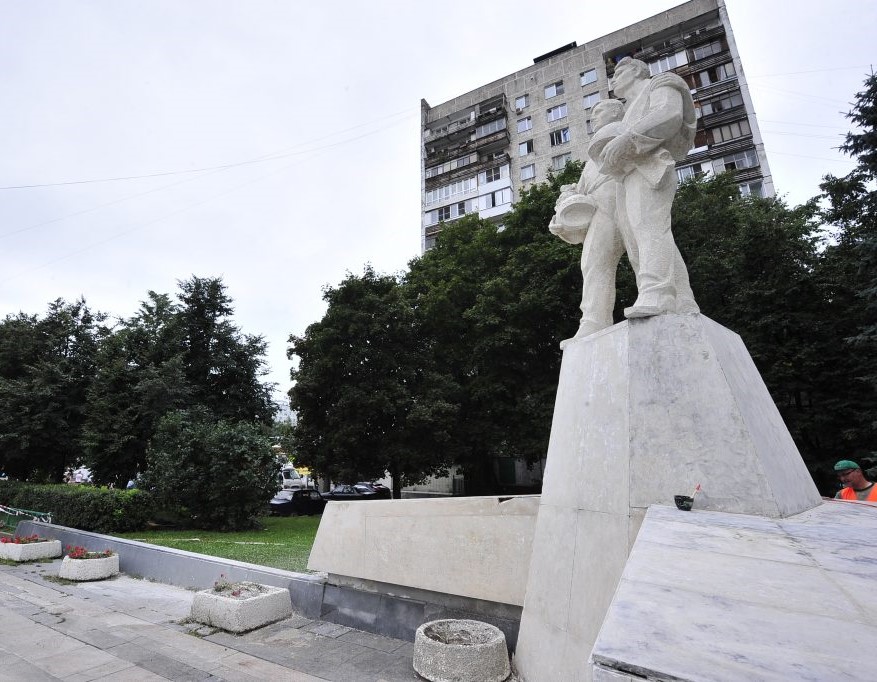Sculptural ensembler
“Intercosmos”

The two-figure sculpture group “Intercosmos” is a composition dedicated to the first Soviet-Czechoslovak space crew. It symbolizes friendship between the USSR and Czechoslovakia. The sculptural group depicting two full-length male astronauts is made of concrete and covered with a colorful layer of white. The pedestal has the shape of an irregular polygon. The sculptural composition is dedicated to the first Soviet-Czechoslovak space crew. The crew of the first expedition under the international program “Intercosmos” to the Soviet orbital station “Salyut-6”: commander pilot-cosmonaut of the USSR, twice Hero of the Soviet Union Aleksey Alexandrovich Gubarev and Czech cosmonaut-researcher Vladimir Remek. The flight lasting 7 days and 22 hours took place on March 2-10, 1978, the Soyuz-28 spacecraft was used for delivery to the station and return. On March 3, 1978, on the 18th orbit, Soyuz-28 docked with the orbital station. After checking the tightness of the docking node and equalizing the pressure, the transition hatches were opened and the crew moved to the station, where cosmonauts Yu.V. Romanenko and G.M. Grechko worked for almost three months. The scientific program of the first joint flight included six experiments. The Chlorella experiment (studying the effect of weightlessness on the growth of the unicellular chlorella algae) began 20 minutes after the crew’s transfer to the station, and ended before returning to Earth. A series of experiments “Morava” allowed us to study the properties of new materials obtained in microgravity. The Oxygen experiment was conducted in order to study the oxygen regime in human tissues in zero gravity using the Czechoslovak device “Oximeter”. The experiment “Heat Exchange-2” was devoted to the study of the cooling properties of the medium. The experiment “Survey” consisted of studying the dynamics of the mental state of astronauts at different stages of the flight. The Extinction experiment consisted of studying the upper layers of the Earth’s atmosphere by changing the brightness of stars as they set over the Earth’s night horizon. During the flight at the station, the cosmonauts conducted television reports, film photography and on-board press conferences. After the program was completed, the first international crew returned to Earth. A series of experiments “Morava” allowed us to study the properties of new materials obtained in microgravity. The Oxygen experiment was conducted in order to study the oxygen regime in human tissues in zero gravity using the Czechoslovak device “Oximeter”. The experiment “Heat Exchange-2” was devoted to the study of the cooling properties of the medium. The experiment “survey” consisted of studying the dynamics of the mental state of astronauts at different stages of the flight. The Extinction experiment consisted of studying the upper layers of the Earth’s atmosphere by changing the brightness of stars as they set over the Earth’s night horizon. During the flight at the station, the cosmonauts conducted television reports, film photography and on-board press conferences. After the program was fully completed, the first international crew returned to Earth.
Address: Moscow, Krasny Mayaka str., 2

